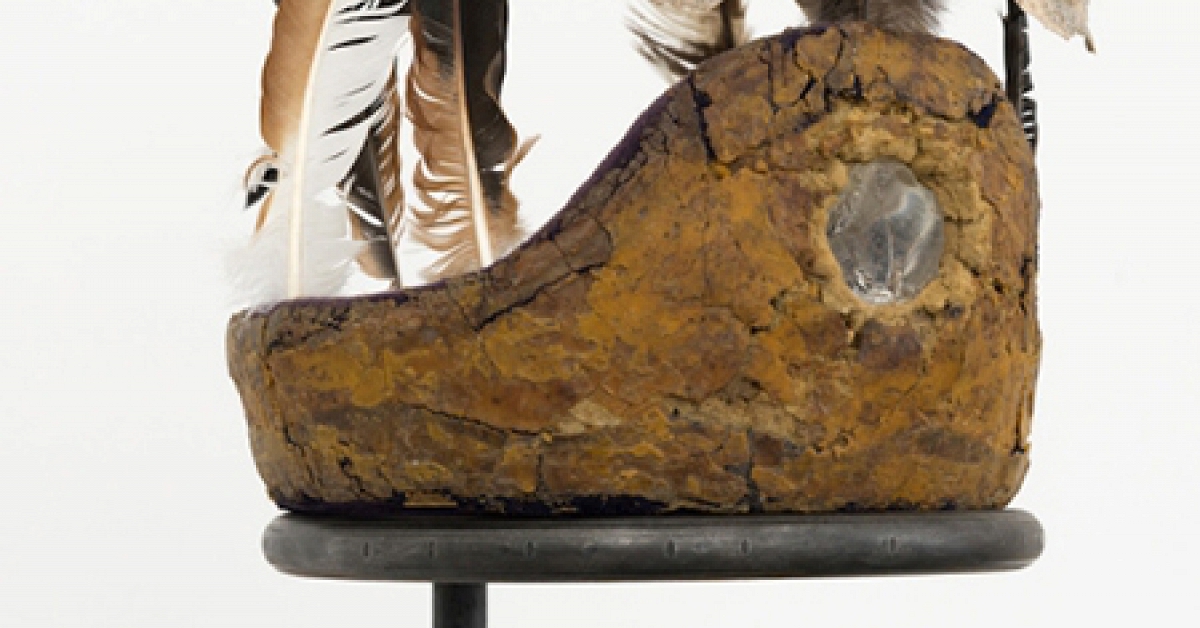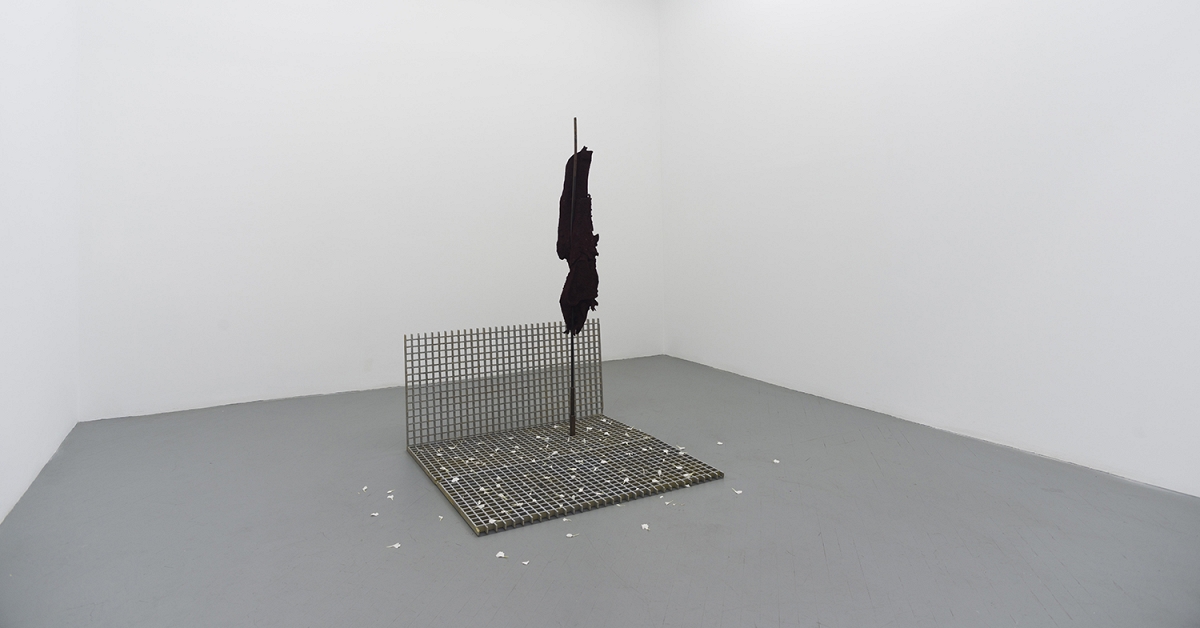Kimball Art Center exhibit explores landscapes and the relationship between nature and humans
Park Record / Oct 9, 2021 / by Scott Iwasaki / Go to Original
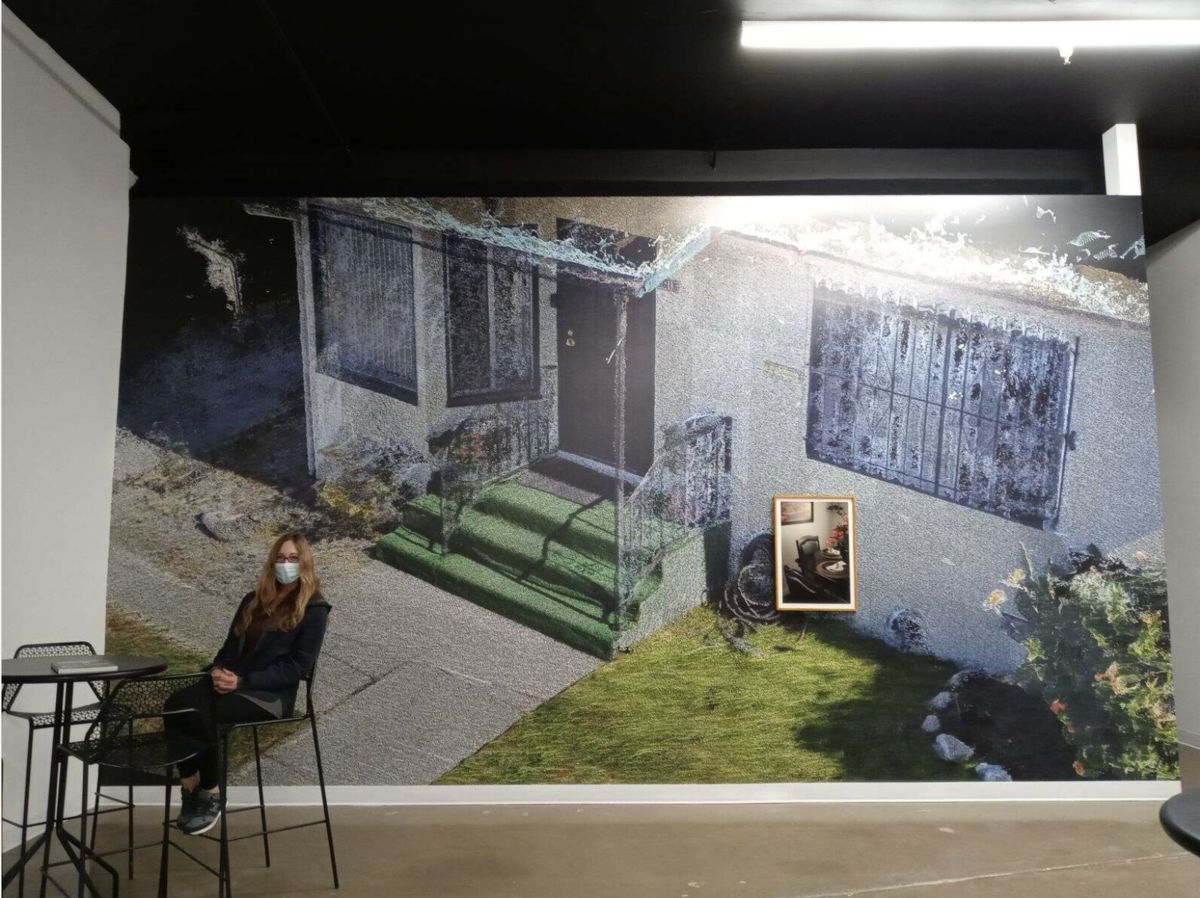
Kimball Art Center Curator Nancy Stoaks sits by one of the installations of David Hartt’s On Exactitude and Science (Watts) at the Kimball Art Center. Hartt’s works are part of a three-artist exhibit that includes Cara Despain’s In Memoriam and Claire Sherman’s Here Now.; Scott Iwasaki/Park Record
The Kimball Art Center explores the relationship between nature and humans through modern-day perceptions of undeveloped and developed terrain in a three-artist exhibit on display through Jan. 2.
“While these are separate exhibitions on their own, there are interesting throughlines in conversations that connect them together,” said Kimball Art Center Curator Nancy Stoaks. “Essentially each of the artists look at the world around us while bringing in their ideas about the urban and natural landscapes.”
The exhibits are Cara Despain’s In Memoriam, which was created by the carbon of wildfires; Claire Sherman’s Here Now, a collection of scenes created through textured oil paintings; and David Hartt’s On Exactitude and Science (Watts), a multi-media installation that includes vinyl wall coverings and film.
“All of these works are all very large, like some of the issues they address,” said Aldy Milliken, Kimball Art Center executive director. “They are more than an individual experience that envelopes us.”
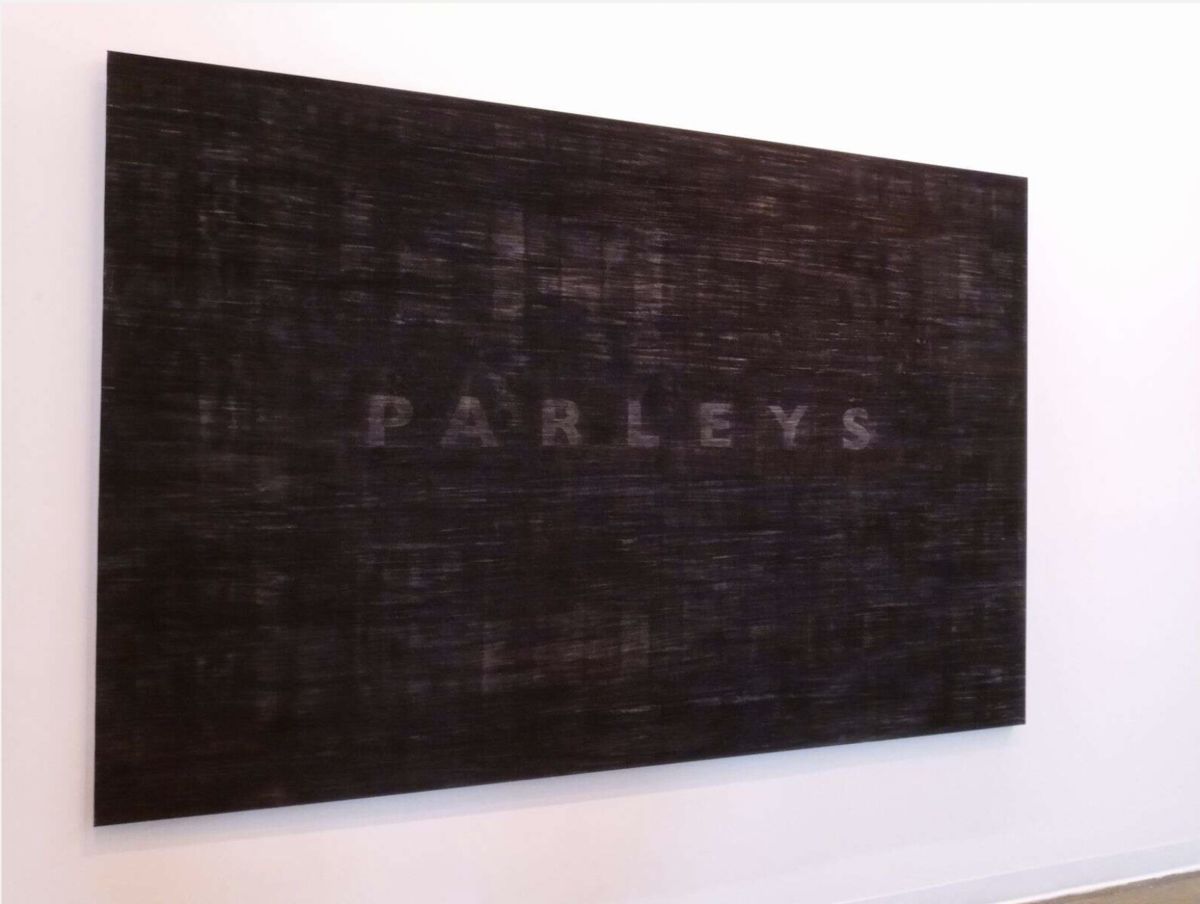
Carbon from the Parleys Canyon Fire covers the canvas on one of Cara Despain’s “In Memoriam” work at the Kimball Art Center. Despain uses the carbon from wildfires to create landscape works.; Scott Iwasaki/Park Record
Despain’s carbon views
Although Cara Despain now lives in Florida, she was raised in Utah and spends the summer in Salt Lake City, and has seen wildfire devastation with her own eyes.
“While fire is a necessary part of any ecosystem in forest ecology, we humans have precipitated a situation where the balance is off,” she said. “We know that these fires have been getting increasingly worse and the fire season has been getting longer. So not only are they burning longer and hotter. They are burning structures that create toxic messes.”
Despain’s new works, which are created by covering thin and stretched canvas with the carbon from burned wood from specific wildfires, are a continuation of her past works. She said the art is a “slippery depiction of beautiful western landscapes.”
“Landscape painting has been heralded by everyone, but when the romantics from Europe began depicting landscapes in the United States they were doing it from a propaganda-like view,” she said. “When the photographers started taking photos of the western United States they were doing it with the intention of settling the West and extracting resources.”
Despain’s works have always pushed up against these complexities of depicting landscape, and she wanted to find a new way to depict the story of how these areas were settled.
The first one she did was in 2019 and it was about the 2018 Camp Creek fire in Paradise, California, that killed 85 people and burned more than 153,336 acres.
“I had mulled over working with material from the fire,” she said. “I wanted the material to tell the story, and things just clicked. I realized the works would be the new landscapes of the American West — choked, charred, barren and black.”
In creating the works, Despain formats and stretches the canvases in the shape and scale of traditional landscape paintings, and coats the back of them so the carbon doesn’t bleed through.
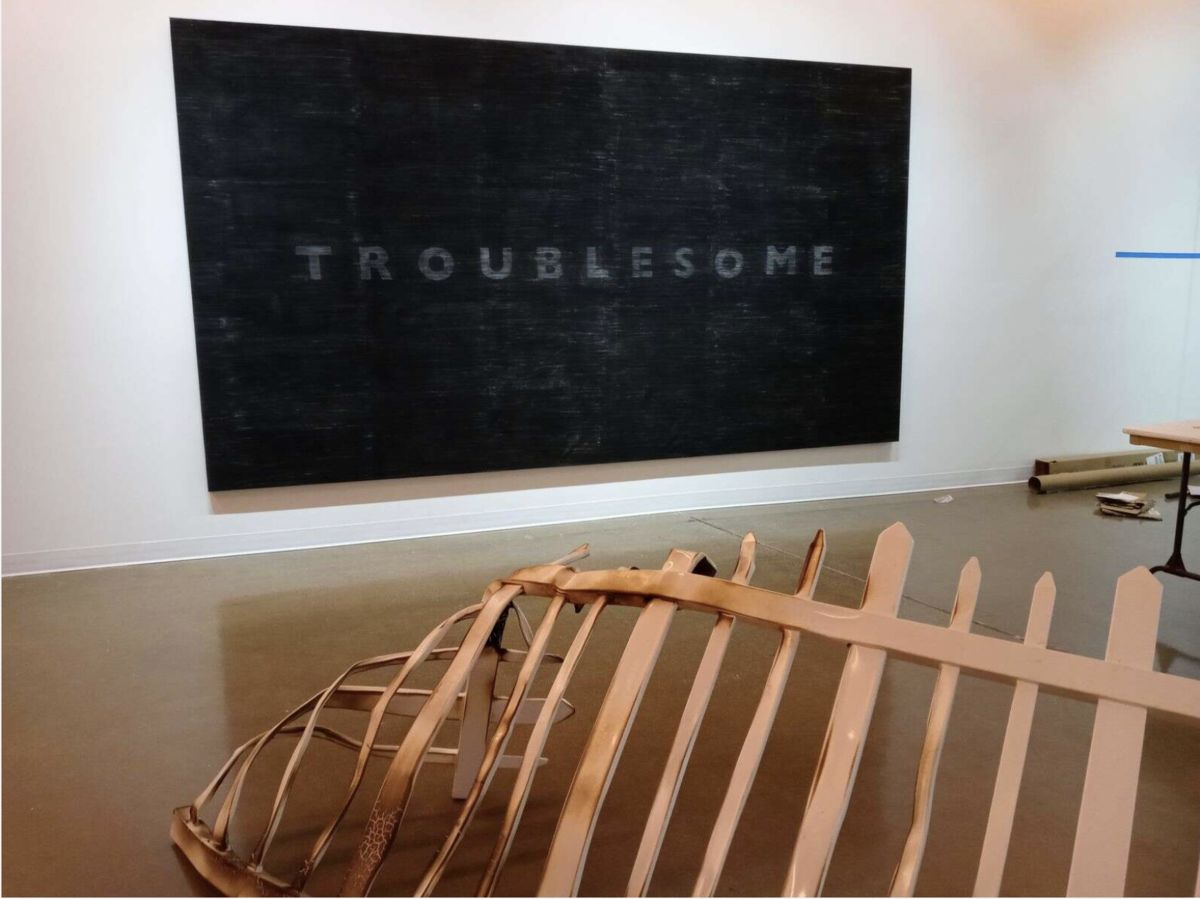
A melted white picket fence lays at the foot of one of Cara Despain’s carbon works that represent the Troublesome wildfire. Despain uses items such as the fence, along with the carbon drawing, to update her idea of landscape art.; Scott Iwasaki/Park Record
“Then I use the carbon from sticks and logs that I have collected from the sites,” she said. “I cut the wood down to the size of drawing instruments and cover the canvas.”
Not only are the works visual, but aromatic.
“I wanted to make sure that people could smell the carbon,” Despain said.
One of the works in the exhibit was created from materials the artist collected at the Parleys Canyon Fire in August that burned nearly 550 acres, and forced residents in Summit Park, Pinebrook, Timberline and Lambs Canyon to evacuate.
“I normally am focused on the superlative fires, but this one was so locally relevant,” Despain said.
Since the fire hit close to home for many in Park City, the Kimball Art Center is using Despain’s exhibit to help the community heal.
“I think of our friends who had to evacuate, so we’ve provided some information for counseling, outreach and coalescing,” he said.
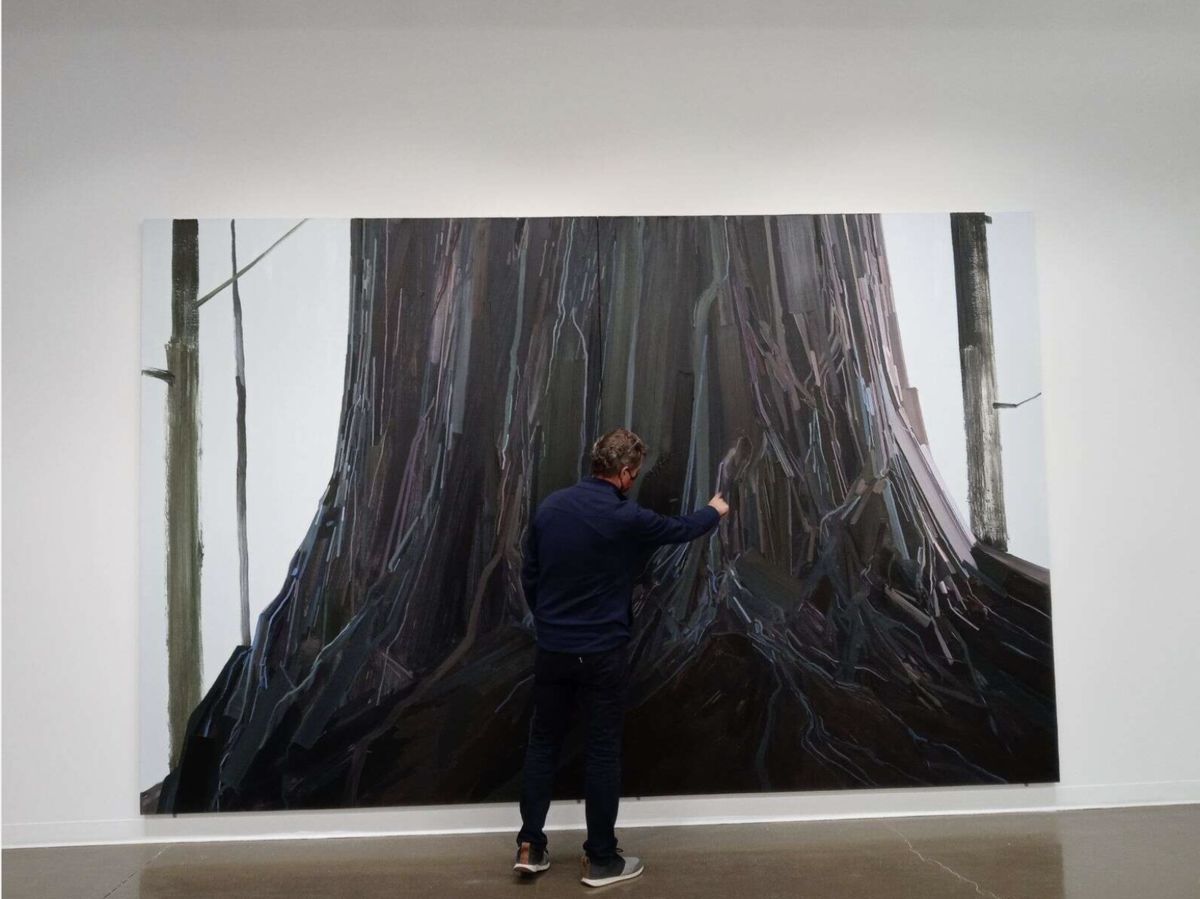
Kimball Art Center Executive Director Aldy Milliken points out some textured brush strokes in one of Claire Sherman’s oil paintings that are showing at the Kimball Art Center.; Scott Iwasaki/Park Record
Sherman’s perspective
Claire Sherman is interested in her paintings’ physical and visceral qualities.
“That’s probably why the works are very large for the most part,” said Sherman, who has a masters of fine art from the School of the Art Institute of Chicago. “I am interested in creating new spaces within the gallery, so the scales and materiality of the paintings on the surface became a new experience for the viewer in a new location of the gallery.”
Toward the end of her time in graduate school, Sherman began exploring ways landscapes could be used to depict a contemporary perspective.
“I became interested in how my work could present spaces that confront the view in some ways,” she said. “The smaller paintings are based on the idea of looking down on the ground and finding the intimacy of seeing something right in front of you, which is a shift from the bigger paintings in the show.”
Sherman also wanted the works to impact the viewer on different levels.
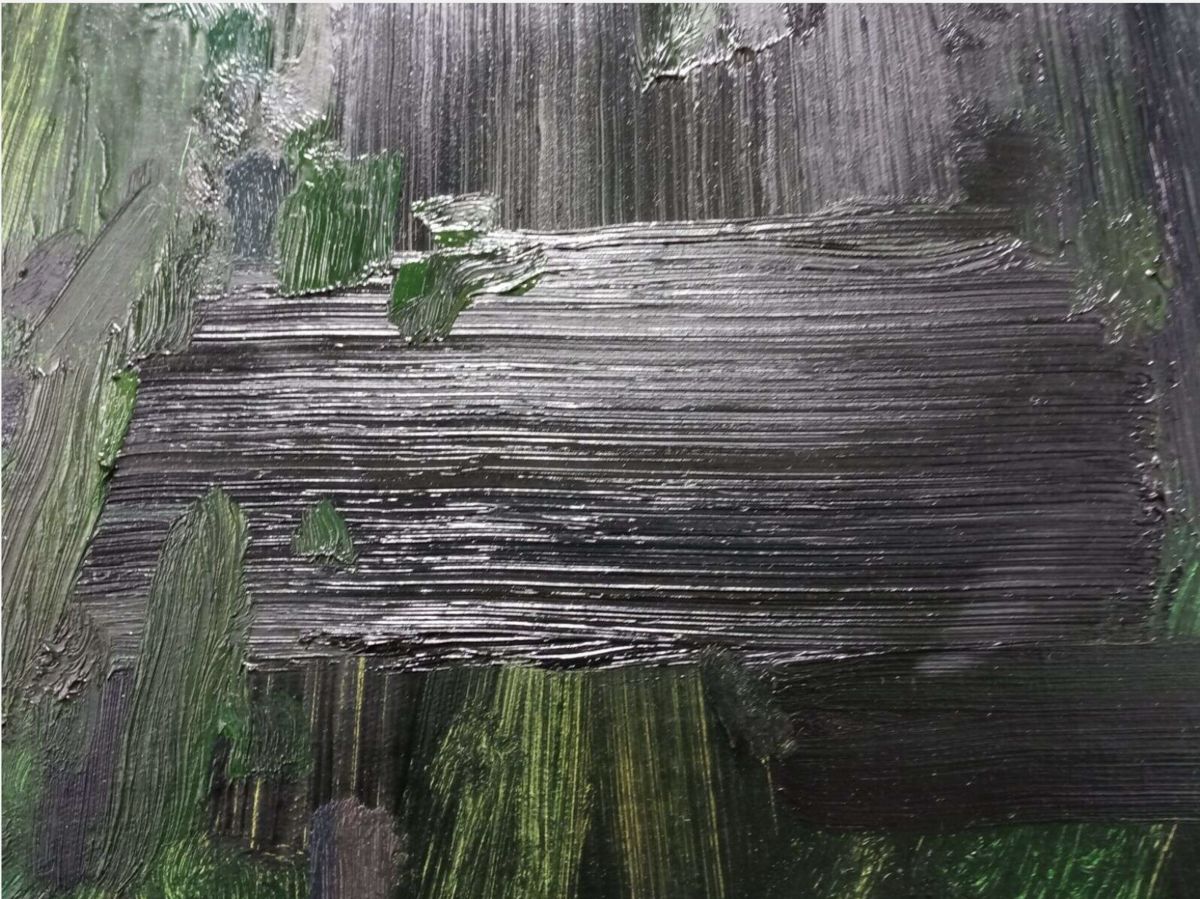
Textured brush strokes found in Claire Sherman’s works engages viewers on a micro level that enhances the larger image, according to Kimball Art Center Executive Director Aldy Milliken.; Scott Iwasaki/Park Record
“I want the paintings to pull people in and push them out,” she said. “I’m interested in how paint can be used to describe something in a Trompe-l’œil effect, where the paint itself becomes the object, but also falls apart while you’re looking at it in abstraction.”
In addition, Sherman didn’t want her works to conform to traditional tropes of landscape paintings.
“Many of my works don’t have a direct horizon line, and they aren’t really about the vista,” she said. “The paintings are based on actual locations, but are also invented. And the spaces tend to be more abstract and consuming. I’m interested in the tension of what painting does in the descriptive capacity and how it is as a material and how we experience materially.”
Hartt’s perceptions
While David Hartt wasn’t available for an interview, Stoaks said his multimedia exhibit also experiments with size and scope.
The exhibit starts off with vinyl wall coverings of architectural structures.
“David worked with an experimental multi-disciplinary studio in Los Angeles, and had them produce models of buildings he had looked at,” Stoaks said. “They did a process called photo realmitry, where they took thousands of photos of the spaces and put them into a program to create 3D renderings called cloudpoints. The finished products have ghostlike characteristics, and if people get close to the vinyl, they will see pixelations.”
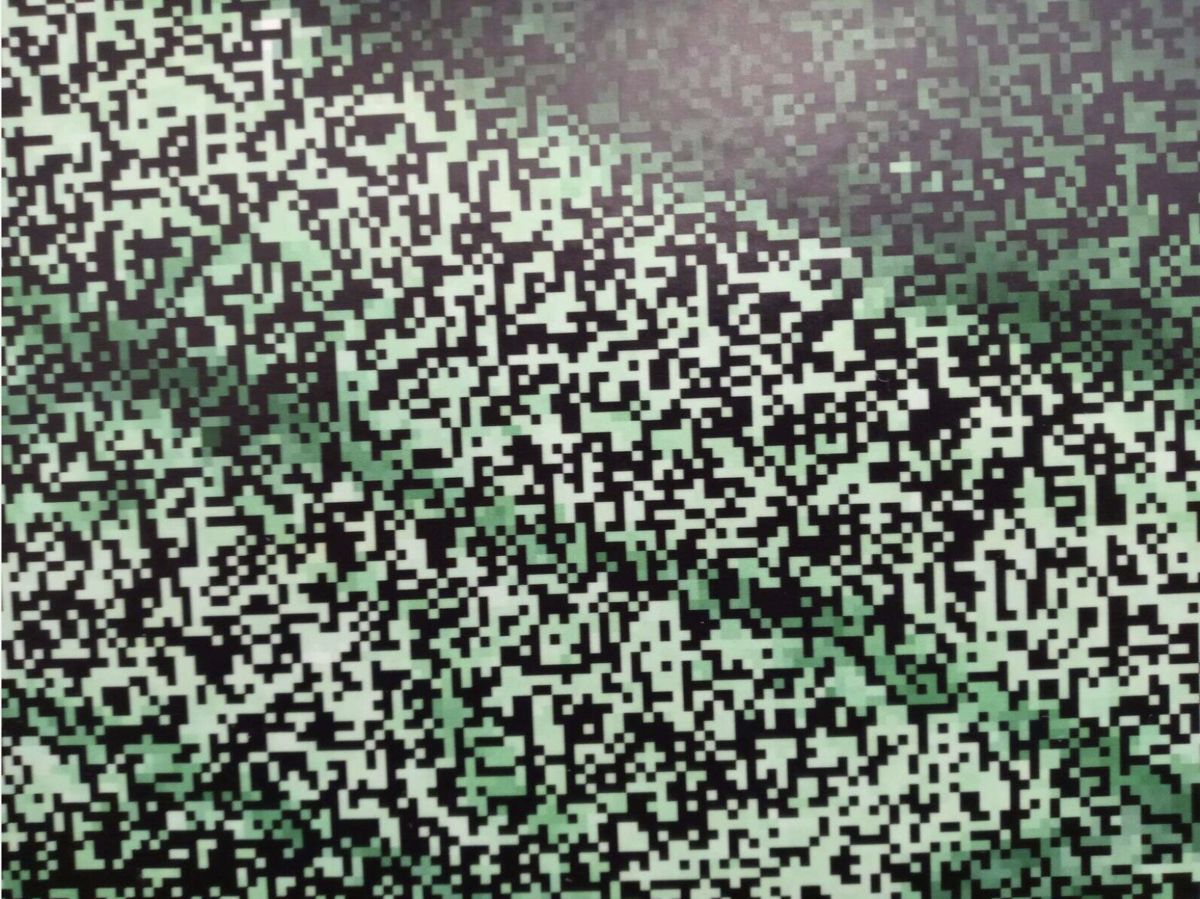
Artist David Hartt worked with an experimental multi-disciplinary studio in Los Angeles that used a process called photo realmitry to create what are called cloudpoints in his wall-sized vinyl installations.; Scott Iwasaki/Park Record
As Hartt developed the project, he knew he wanted to add a video installation, according to Stoaks.
So Hartt brought in filmmaker Charles Burnett, who made a film in 1978 called “Killer of Sheep,” and the film is about a man who works in a slaughterhouse in the Watts, California, area, she said.
“David, thinking about space and the ideologies in our built environments, wanted to return to Watts, and all the spaces that David uses are based on the spaces Charles uses in his film,” Stoaks said. “While David has a clinical and detached view of these spaces, he overlays them with a personal and double narrative collection of memories provided by Charles.”
Milliken is grateful the Kimball Art Center is a large enough space to accommodate the installation.
“We are giving a physical opportunity to the public so they can experience this environment and dig into the layers of meaning,” he said.




